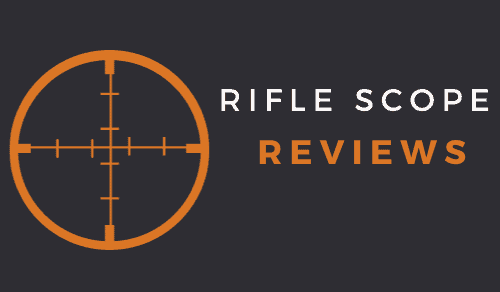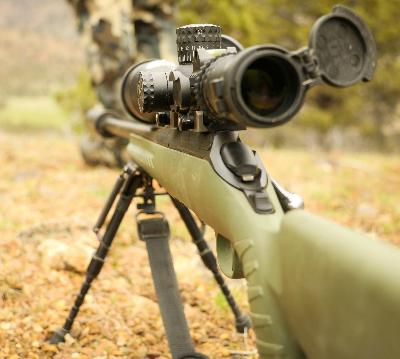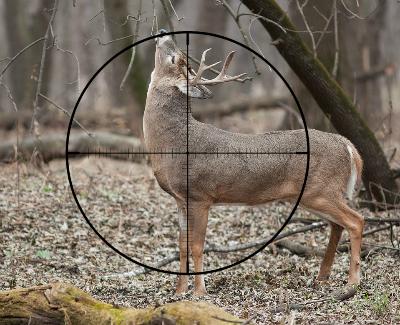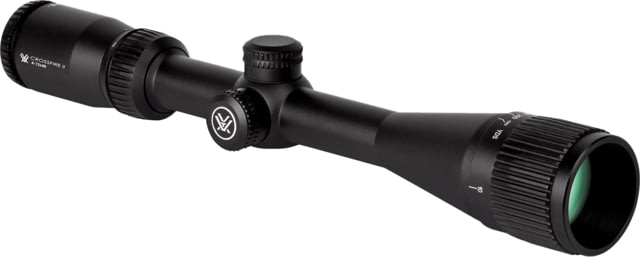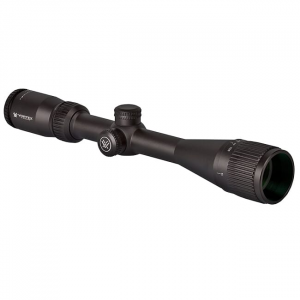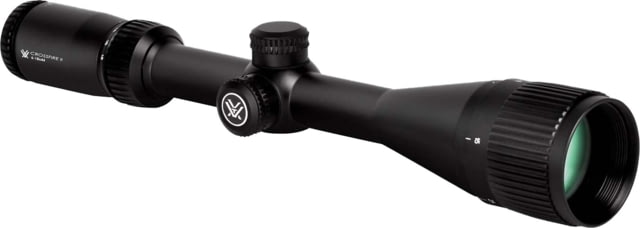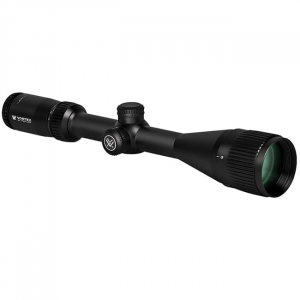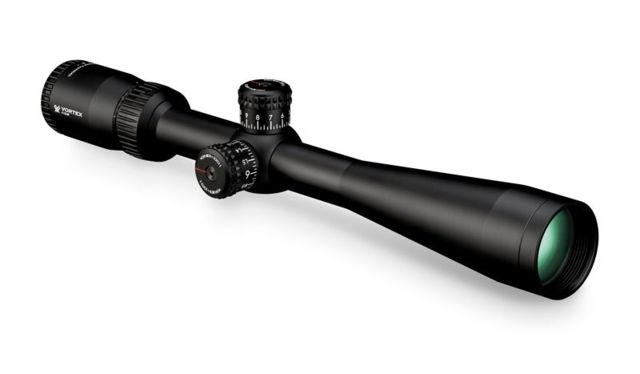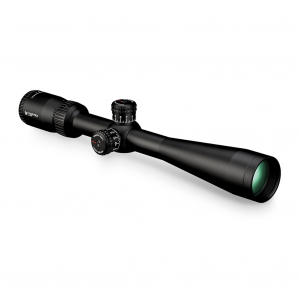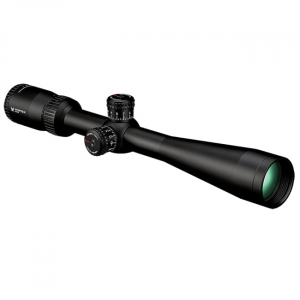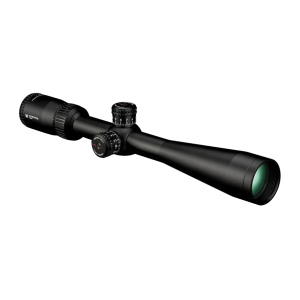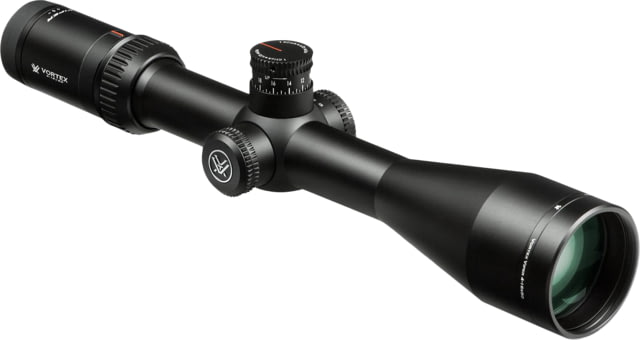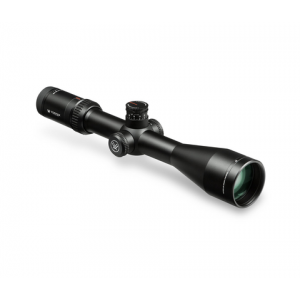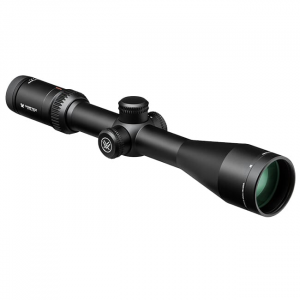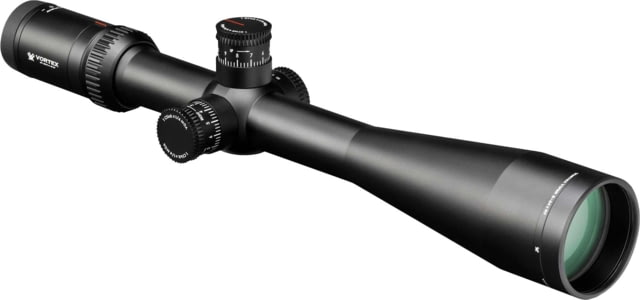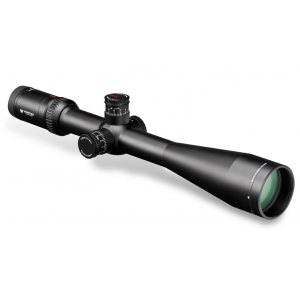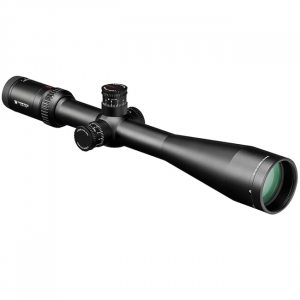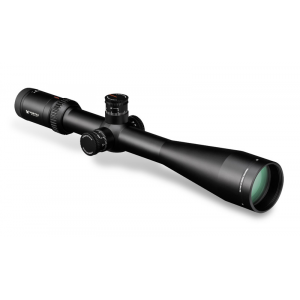As an Amazon Associate I earn from qualifying purchases. Amazon and the Amazon logo are trademarks of Amazon.com, Inc, or its affiliates.
In order to answer the question of “What’s the best Vortex scope for deer hunting?”, we first have to establish some parameters about exactly what type of deer hunting are we talking about.
For the most part, when you hear the deer hunting phrase, most people assume you are talking about hunting the Whitetail deer (species Odocoileus virginianus). However, that answer can vary depending on what part of the country you happen to be in.
If you talk about deer hunting west of the Rocky Mountains, you’ll have to be a little clearer as you could also mean hunting for Mule deer (species Odocoileus hemionus) as opposed to White-tail deer.
Once we’ve established what species of deer are being hunted, then we have to look at three other factors that can play a role in the scope options within the Vortex line. Those options are:
- Terrain
- Estimated range (which is generally somewhat tied to the terrain as well)
- Budget (if you aren’t sure about budget, check out the How Much Should I Spend on a Scope article)
Deer hunters are a highly opinionated bunch, and many will tell you that the terrain really doesn’t matter as much as deer hunting is deer hunting. While there may be some truth to that approach, there are also some fallacies in it.
Terrain matters for scope choice as terrain plays a major role in the average shot distance. The average shot distance definitely matters when scope shopping.
For example, a hunter who deer hunts in the swamps of southern Georgia, where the foliage and ground cover are thick, will probably be looking at an average shot range of fewer than 100 yards. Compare that to a deer hunter in Kansas who primarily hunts the wide-open cornfields, where the average shot distance is in the 250 to 300-yard range.
Although both are officially “deer hunting”, each will be better suited with a more mission-specific rifle scope. The Georgia hunter can probably get by with the traditional 3-9 powered scope or a slightly more powerful 4-12 power model, but the Kansas hunter will struggle trying to make a 300-yard shot on 9x power. He/She would be much better served with a higher power scope in the 4-16 or 5-20 range.
Plus, the Georgia hunter in heavy foliage and tree cover will be better suited with a scope that performs well in low light conditions as the heavier foliage will cause less light to penetrate through the tree canopy, making it seem darker than it really is. In that case, a scope with a 30mm tube might be a better option than a 1-inch tube model.
Budget is equally important as it really defines exactly which Vortex scope models that are within your allotted budget. If your budget is $300, then it doesn’t make sense to look at the Vortex Razor series of scopes as they run around $1800.
If you’ve been doing some research on Vortex scopes, then you’ve probably already read a number of suggestions on the top vortex scope options for deer hunting. That being said, you may find that my suggestions are a bit different from others as I don’t see where one Vortex scope model is going to fit every need. As such, I prefer to “recommend” that you look at your own specific hunting needs and then match a Vortex scope to that need.
My Top Vortex Scope Choices for Deer Hunting
Power Range | Image | Tube Size | Focal Plane | Reticle Options | Shop |
Vortex Crossfire II 4-12x50 | 1 inch | Second Focal Plane | Dead-Hold BDC (MOA) | ||
Vortex Crossfire II 6-18x44 | 1 inch | Second Focal Plane | V-Brite Illuminated (MOA) | ||
Vortex Diamondback Tactical 4-12x40 | 1 inch | Second Focal Plane | VMR-1 (MOA) | ||
Vortex Viper HS 4-16x50 | 30mm | Second Focal Plane | Dead-Hold BDC (MOA) | ||
Vortex Viper HST 6-24x50 | 30mm | Second Focal Plane | VMR-1 in MOA or MRAD |
Let’s dive a little deeper into each of those models to discuss how and why these are my top deer hunting optics in the Vortex line of scopes.
Vortex Crossfire II 4-12X50 Dead-Hold BDC Reticle
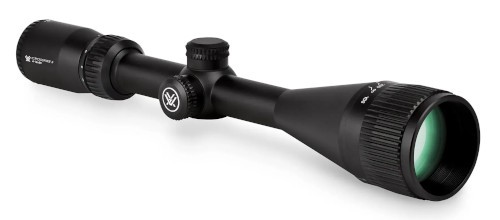
So, if you look at the Vortex line of scopes from top to bottom, the Crossfire II series is really more of a budget-oriented line that is one step up from their entry-level Copperhead scope series. Now, even though the Crossfire II series is a budget-oriented line for Vortex, it still offers great value given the features and glass quality.
The Crossfire II 4-12X50 with the Dead-Hold BDC reticle is a great option for deer hunting, where the shot ranges are going to be less than 200 yards. The 4-12 power range is more powerful than the traditional 3-9 scope but small enough in size that you don’t end up with a ton of unnecessary scope weight.
The 50mm ocular draws in an ample supply of light, making this model an ideal option for short-range shots in dense woods or in low-light conditions.
The Dead-Hold BDC reticle offers the flexibility for shorter-range shots, with the BDC functionality giving the shooter the ability (if needed) to step out to longer ranges with confidence.
Another great feature of this scope model is the parallax settings (focus) that go all the way down to 10 yards. That’s a big plus for me, as there’s nothing worse than taking a shot at a deer at closer ranges and the image picture in the scope being fuzzy and out of focus due to the adjustable objective not going below 50 yards.
If I had to nitpick about things I didn’t like about this model, it would be the following:
- Eye relief – Vortex advertises it as 3.9 inches, but I’ve found it to be closer to 3.5 inches. That’s not really a huge issue and certainly isn’t a deal-breaker.
- Weight – With a length of 14.2 inches, this scope weighs in at 20.6 ounces, which is a little heavy for a scope of this power built on a 1-inch tube. Now, you could make the counterargument that the scope is this heavy as it’s built like a tank, which it is!
Again, neither of these issues are big ones, and neither are even close to a deal-breaker.
If for some reason, the 50mm ocular is a turn-off for you, Vortex also offers this same scope model in a 4-12X44 with Dead-Hold DBC reticle as well.
Pros
- Good power range for most deer hunting scenarios.
- Above-average glass clarity for an optic in this price range.
- The BDC reticle extends shooting distances.
- The AO focuses down to 10 yards.
Cons
- Eye relief seemed shorter than the advertised 3.9”.
- Weighs 20.6 ounces which is heavy for a 1-inch scope that is 14.2 inches long.
- I’d prefer a side focus option over an adjustable objective, but that’s just me.
If this Crossfire II model interests you, here are a few places I found it for sale online:
Vortex Crossfire II 6-18X44 V-Brite Illuminated Reticle
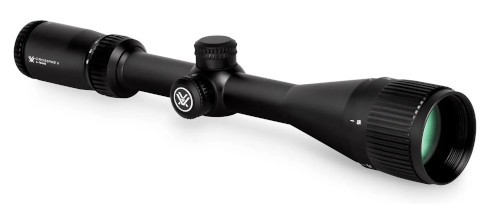
If the 4-12X40 power range discussed above isn’t enough power for you, and you’re looking for a Vortex scope that will work for more long-range shooting, then you might want to look at the Vortex Crossfire II 6-18X44 with the V-Brite reticle.
The 6-18 power range is more than enough for most deer hunting scenarios, and that magnification range offers a major amount of versatility.
Many deer hunters who come to the scope counter where I work (my day job) can be turned off on a 6-18 power range, thinking that it’s “overkill” for deer hunting, but that’s just an opinion.
Truth is, you can mount this scope on a deer rifle and only use the 6-10 power range if you choose but still have the higher power ranges in the 11-18 range if you need it. I come from the camp where I’d much rather have the magnification power (to a point) for use if necessary versus not having it available to me should a trophy buck show up at a longer-range distance.
I have a buddy who runs this exact model on his 270 Winchester (I sold it to him at my day job), and he’s what I call a field edge hunter who mostly hunts on the edges of large fields of either corn or soybeans. His longest shot to date was taken on a really nice 8-pointer at just over 380 yards. He turned the power up on this model to 18 and said the buck was clear as a bell. Now not everyone is going to feel comfortable taking a shot at that range, but he puts the time in practicing at various distances (he’s a hardcore rack hunter), so he felt confident at that range.
Another reason I really like this model is the illuminated V-Brite reticle. It works great for precise shooting, and the illumination is worth its weight in gold in low light situations.
Now to be fair here, illumination always comes at a price, and that price is the added weight associated with the illumination components. But Vortex does a good job of minimizing the impact of that added weight. For example, the non-illuminated version of this scope weighs 19.6 ounces while the illuminated version weighs 20.6 ounces, so you’re talking about a 1-ounce increase in weight for illumination.
Pros
- A higher power range offers versatility for almost any deer hunting scenario.
- Features an AO that focuses down to 10 yards.
- Very durable and well-built.
- Glass is above average for this power range.
- The illuminated reticle can be a benefit in low light situations.
- Outstanding value for the $$
Cons
- A little on the heavy side for a 1-inch scope in this power, but worth it for the illuminated reticle.
- This model features an adjustable objective, but I really prefer side focus.
Here are a few locations where this specific Crossfire 2 scope is available for sale:
Vortex Diamondback Tactical 4-12X40 VMR-1 Reticle
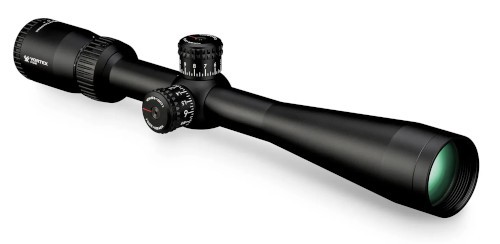
If you are deer hunting in more wide-open spaces and have the need for a hunting scope that has the capabilities and design of a long-range scope, then the Diamondback Tactical 4-12X40 with the VMR-1 reticle might be for you.
This scope design is really built and marketed towards long range shooters who are doing some long-range deer hunting (and this probably means Mule deer). The set-up and reticle are geared towards a more long-range scenario with a hunting twist.
So, if you are a regular long-range shooter who spends time banging steel at 1000 yards and has decided to venture into deer hunting and want to hunt with the same style of long range scope, the Diamondback Tactical scope would be an option.
This model features exposed tactical-type turrets for dialing changes for elevation and windage, along with a zero-reset setting allowing you to return to zero.
Honestly, if you aren’t familiar with long range shooting concepts, then this model probably isn’t for you. I’d suggest taking a second look at the Crossfire II series or the Vortex Viper HS series instead.
Pros
- Surprisingly good optical quality for the $.
- This model is equipped with a resettable zero.
- MOA-based reticle for all you MOA fans.
- The reticle and features are quite versatile as it can quickly be adapted to mid-range to longer-distance shots.
Cons
- The reticle is non-illuminated, so can be challenging to see clearly in low light situations.
- The parallax only goes down to 100 yards, so any shot under that will potentially be out of focus.
- I wish Vortex would offer additional reticle options on this model, especially an MRAD model.
Here are a few online vendors who offer good pricing on this specific Vortex optic:
Vortex Viper HS 4-16X50 with BDC Reticle
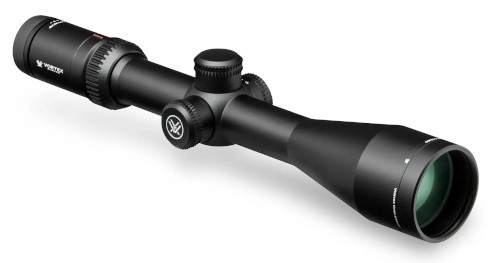
If you are a serious deer hunter who wants top-quality optics at a reasonable price, then the Vortex Viper HS 4-16X50 with BDC Reticle is a scope worth considering.
The 4-16X50 power range is ideal for most shots up to the mid-range, and the 50mm ocular bell pulls in plenty of light.
The Viper is built on a 30mm tube (versus a 1-inch tube) so that larger tube also pulls in more light as well. And, the 30mm tube also offers an increase in windage and elevation adjustment over a 1-inch tube.
The Vortex Dead-Hold DBC reticle is MOA-based and gives the shooter the ability to comfortably extend the shot ranges out to longer distances with a little practice.
The glass quality on the Viper HS is very good, especially for a 30mm tube, but, like most items of value, that glass quality comes along with a higher price tag. The glass on this model is definitely better in quality than the Crossfire II series and the Diamondback Tactical models above, but the costs are higher as well.
Pros
- Good quality glass with good edge-to-edge clarity.
- Excellent eye relief at 4 inches.
- Covered by Vortex’s excellent warranty.
- The BDC reticle offers good longer-range options.
- Expanded windage and elevation range thanks to a 30mm tube.
Cons
- The parallax on this model only focuses down to 50 yards. Not a deal-breaker, but I really prefer that it focus down to at least 25 yards. Again, it’s a bit of a nitpick issue on an overall good scope.
If you want to learn more or are interested in this Viper scope, here are a few popular vendors that have it for sale:
Vortex Viper HST 6-24x50mm with VMR-1 MOA Reticle
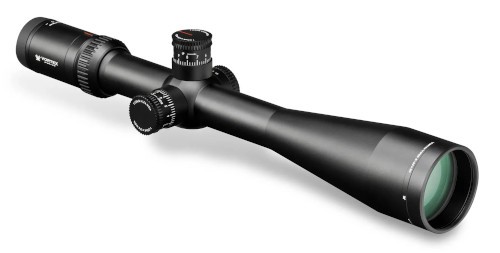
If you’re shopping for a deer scope that will let you really reach out and touch a deer, then the Vortex Viper HST 6-24-50 with the VMR-1 MOA reticle is worth a look.
While the HST series isn’t one of Vortex’s absolute top of the line scope series, it’s definitely a higher end model. The 6-24 magnification range is versatile enough to fit most any deer hunting scenario.
Although I’ve mentioned it before, it’s worth saying again. A 6-24 powered scope is NOT overkill on a deer rifle. If you prefer a lower power setting, you can run the scope on the 6-8 power range and never use the higher magnification ranges at all. Again, I’d much rather have the higher magnification range available if needed than not have it all.
One big counterpoint to the higher magnification powered scopes is the so-called fallacy of the higher power range models weighing more than the lower powered model. While there may be a very small amount of fact to that statement, the amount of additional weight is negligible.
For example, this 6-24 model of the HST series weighs 22.6 ounces, and the lower powered 4-16 model weighs 20.8. That is a weight difference of 2.2 ounces. I’ll gladly carry that extra 2.2 ounces to have the additional power magnification of the 6-24 model.
Like most of the higher-end Vortex scope lines, this HST model is built on a 30mm tube which, in my humble opinion, seems to pull in more light compared to a scope built on a 1-inch tube.
This model also features the exposed target-style turrets with a CRS zero stop and a side focus AO that focuses down to 50 yards.
Pros
- Outstanding glass with high optical clarity
- Features Vortex’s CRS Zero Stop to return to zero.
- Extended eye relief at 4”, so it works great for higher caliber rifles with higher recoil.
- Can integrate with Kenton Industries turrets for a complete custom turret configuration.
- Available in both MOA and MRAD-based VMR-1 reticles, offering enhanced capability for holdover and wind adjustments.
Cons
- The reticle is not illuminated and can be hard to see in low conditions (although rumor has it that Vortex is considering an illuminated reticle on this model based on customer feedback).
- The side focus adjusts down to 50 yards, which isn’t bad, but I really wish it go down a little bit farther.
Here are a few popular online vendors that have this Vortex model for sale:
Finally, it’s important to remember that the Vortex scope models listed above are just recommendations. At the end of the day, it’s your money, and I encourage you to spend it any way that you want as you earned it!
I’ve been working in the firearms and sporting optics industry for over 20 years, with a personal and professional interest in all things related to rifle scopes, Through a combination of work experience, formal training, and personal experiences, I have extensive experience mounting, testing, and evaluating different rifle scope models across most major optical brands.
